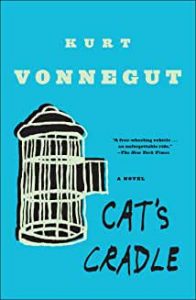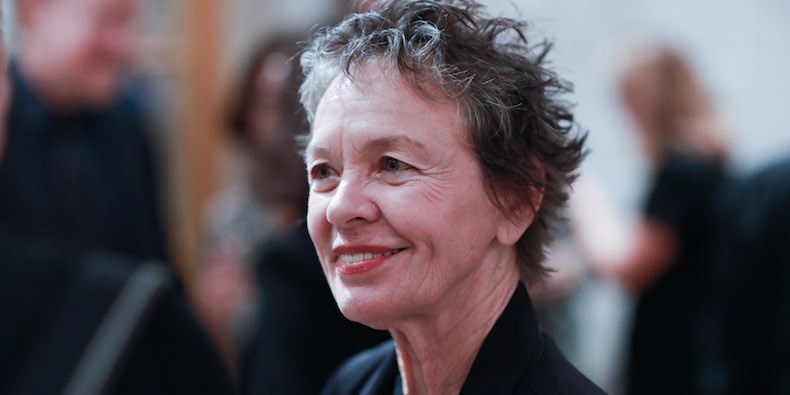Kinda feeling like the Earth just sent us all to our rooms to think about what we’ve done. —Michael Moore
Category: transition
We are now living through a transition from fossil capitalism, hyperconsumption and overpopulation to a world where human presence to the planet Earth will be radically transformed – whether we like it (or survive it) or not.
Transmission
Transition link for the day: George Monbiot gathers examples of how people all over the world are stepping up to help their local communities cope with the COVID-19 crisis.
I’ve been revisiting my own book lately, and realizing how much there is in it that could be useful to people coping with the current situation and the broader transition. For instance, most of the transition sources i’ve been reading and citing here emphasize the importance of “systems thinking.” That kind of thinking pervades Turning Signs, with a particular emphasis on what i call guidance systems. It also has an apocalyptic side, though maybe not in the way you think: For instance look at the latter part of the first chapter, Beginning: Apocalypse.
If you’d like to comment on any of this, you can type it in below, or join the conversation live.
Life the pandemic
It seems that everyone has something to say about the COVID-19 pandemic. Still i can hope to say something you haven’t heard before.
The coronavirus is a life form which exploits the internal resources of its host for its own purposes. All it wants to do is proliferate; destroying the health of its individual host is a side effect. If it mutated into a form that killed all of its hosts, it would destroy itself as well. If it mutates into a form we can live with, like the common cold or something more benign, it will live as long as we live to host it. But it has no control over how it mutates; it is not aware of the effects it has or even of what it ‘wants to do.’
Humanity too is a life form which exploits the resources of its host (the Earth) for its own purposes, and is busily destroying the health of its own support system. The present pandemic has slowed down our busyness, which we are pleased to call “the economy,” and this slowdown has given some of us a rare opportunity to step back and reflect on the whole situation. We might even mutate into a more benign and less destructive presence on the Earth. Unlike that of a virus, though, our self-mutation could be consciously chosen – if humanity as a species can achieve something like a collective consciousness.
No matter what conscious choices we make, either as individuals or as a species, they are motivated by values that we are hardly able to question while we live. Living makes us partial to life. All life forms are held in the ruthless grip of life itself, compelled to seek out forms of energy that they can transform into their own activities, embodiments and infrastructures. Every living body is driven to survive and reproduce, to crowd out a place for itself and its kin. Every life form is dedicated to continuing its existence; even a life form that realizes its kinship with all living beings is partial to life itself. Life not only determines our needs but tells us what to want.
There is no force in the universe more creative, or more destructive, than the life force. If it has any purpose other than persisting, it must be to diversify its embodiments. Over the course of evolution on earth, both biological and cultural, it produces ever more baroque and bizarre complexities of body type and behavior, often at the expense of other types, other species. Since every one of them wants to go on living, Life imbues us all with a horror of death, making us forget that death is an essential feature of it, and extinction an essential feature of evolution. Life does its best to hide that side of its nature by distracting us with all sorts of motivations, pleasures and predilections, interests and intentions, celebrations and cerebrations. Even now it inspires this writer with the illusion that life is coming to know itself through me.
Yet there are moments when life seems to loosen its death grip on us, when we let go of conscious intentions and allow time, which is even deeper than life, to carry us along. After working on Turning Signs for 20 years, or perhaps all my life, it now occurs to me that living the time is what it was all about. All i have to do now is let go of it, and be ready for what’s coming next. Can humanity do that?
Energy crisis
The “energy crisis” of the 1970s was all about the supply (and the price) of fossil fuels. Looking back on it half a century later, it’s clear that the real crisis was (and is) the human addiction to fossil fuels, which we in the “developed” world have been unable to shake off. Now the “climate emergency” is forcing us – those of us who are not mired in denial – to see that we have become dependent not only on the use and abuse of oil, but also on the infrastructure which it made possible.
The only cure for this chronic disease is to build a new infrastructure, and adopt a new “lifestyle”, that can be powered mostly by renewable energy sources. Nothing less can mitigate the fourfold crisis (of ecology, economy and equity as well as energy) which now threatens the viability of life on earth. This has to be part of the “Green New Deal”, but we aren’t always realistic about the challenge of actually doing it at this stage of the game.
A recent article on the Uneven Earth site explains it all quite succinctly. I recommend it, especially to proponents of a Green New Deal or equivalent policy.
On the matter of “lifestyles” (as we used to call them back in the 20th century), I will close with a reflection from Bill McKibben, in his book Falter. He says that of all the lives on Earth, the most curious
are the human ones, because we can destroy, but also because we can decide not to destroy. The turtle does what she does, and magnificently. She can’t not do it, though, any more than the beaver can decide to take a break from building dams or the bee from making honey. But if the bird’s special gift is flight, ours is the possibility of restraint. We’re the only creature who can decide not to do something we’re capable of doing. That’s our superpower, even if we exercise it too rarely.
Groundhog Day
Halfway through the winter here in the northern hemisphere – a very mild one here, so far.
Our electric car, the BatBolt, has performed very well this winter, although a full charge only gives us about 280 km of range, as opposed to 400 or so in the summer. So we decided to risk a trip to Toronto, over 500 km away. We had to stop twice on the way down, and on the way back, to quick-charge the batteries, which took an hour or more each time. We have apps to find those DC charging stations along the route, but they are still few and far between in northern Ontario, so we were lucky that they were all working and available when we needed them – thanks mostly to Petro-Canada for installing them along the trans-Canada highway. Lucky also that we had good travelling weather, that all the fast charging was free, and that we could plug in the BatBolt for slow-charging at the Airbnb the whole time we were there.
What drew us to the big city was an appearance, and a virtual reality installation conceived, by Laurie Anderson at the Royal Ontario Museum. VR is a new experience for me, although the kind of movies we play in HD at home could be described as “virtual realities” to the extent that the viewer gets immersed in them. What’s different about “real” VR is that you can direct your attention anywhere in the full sphere that you are virtually inside of, and you have some control over your virtual movements within that sphere. Or as Laurie put it in her talk about it, you can fly. Your body and its movements are visually integrated with the work of art, instead of being forgotten as they are when you’re watching a movie on a screen and that’s where all the movement is.
Was that experience worth the risk of a 500-km trip in January? The dominant petro-culture takes the privilege of travelling like this for granted, but that’s part of the fossil foolery behind the current climate emergency, so it’s not something i take lightly. Being able to do it without burning any fossil fuels made a big difference, though. Since our three-day trip included a visit to the Art Gallery of Ontario and lots of time with Pam’s brother Tom, along with some extra perks, we really appreciated the privilege. Cruising along the six-lane highway into the city, watching the commuter traffic crawl out of it while we listen and laugh to Crazy Town podcasts, felt right somehow. After all, there’s no telling how long this kind of show will go on. This reality is not virtual, but it sure is temporary. No matter what the groundhog says.
Nostalgia for the 21st Century
If i may shamelessly lift a few lines from the last rites of the Bokononist faith:

God made mud.
God said to some of the mud, ‘Sit up!’
‘See all I’ve made,’ said God, ‘the hills, the sea, the sky, the stars.’
And I was some of the mud that got to sit up and look around.
Lucky me, lucky mud.
The mud of the 21st Century had truly wonderful means of looking around. If you never heard of the Bokononist faith, for instance, you could just “google” it and read all about it. Or type the keywords into some other search engine, if you didn’t trust Google’s algorithms to properly rank the results.
You didn’t have to fly anywhere to witness nature’s most amazing events. The BBC Earth crews did the flying, and the patiently waiting for the wildlife to do something interesting, so you could see it all in high-def, time-lapse and slow motion. You could even see a picture of the supermassive black hole at the centre of a distant galaxy, taken with a radiotelescope array the size of the Earth.
Meanwhile, other species of mud living on the same planet were swallowed up in mass extinction – the sixth in the planet’s history, but the first caused by a single species. That peculiar form of mud even had the means to look into its own past and see where it went wrong, and what a more sensible species could do on behalf of all mudkind. It had the means to wonder whether it would ever wake up from its busy, busy sleepwalk.
Homage to Ram Dass (1931-2019)
Now here this.
Time is not a renewable resource.
Winter Solstice, 2019
The winter solstice is here at last. It’s comforting to know (as well as we can know anything about the future) that tomorrow the northern hemisphere will begin tilting back towards the sun and the daylight hours will begin to increase. Our solar-powered life here on Manitoulin Island will become more secure; by February we will hardly need our generator at all to keep our batteries charged up. In the meantime we can enjoy tramping about the woods with our snowshoes, or watching the chickadees and goldfinches at the feeder.
The global news is not so good. The climate summit in Madrid, COP25, was an abject failure, with the big polluters blocking any attempt at a concerted international effort to significantly reduce greenouse gas emissions. We can expect no genuine leadership to come from the top levels of our governments. That leaves it up to us at the local level to build up our relilience as we deal with the ongoing emergencies. As for instance the Dutch agroecology movement is doing.
The more we humans carry on consuming our context as we have been, the less likely we are to manage the consequences. For instance, where will the hundreds of millions of climate refugees go in the coming decades – now that we have already exceeded the carrying capacity of the planet and driven so many other species to extinction? One journalist in Madrid was musing about all this, and about the Greta phenomenon, as he watched the negotiations fall apart.
My own musing is this: whether we manage to “manage” or not, i hope we can at least wake up from the dream of “progress” and live our time wholeheartedly. I find more resonance than ever in Thoreau’s words from Walden:
God himself culminates in the present moment, and will never be more divine in the lapse of all the ages. And we are enabled to apprehend at all what is sublime and noble only by the perpetual instilling and drenching of the reality that surrounds us.… Let us spend one day as deliberately as Nature … Be it life or death, we crave only reality.
Will technology save us?
Electric realism
William Rees, co-inventor of the ecological footprint concept, recently published an article entitled ‘Don’t call me a pessimist on climate change, I am a realist.’ He outlines all the reasons why it is unlikely that humanity will achieve the transition to a just, healthy and sustainable way of occupying our planet. I’m inclined to agree with him on that. So i hope readers don’t think i’m an optimist on climate change just because i’m writing about ‘the transition’ and doing what little i can to further it. I’m not an optimist on living forever, either, but that only encourages me to live more deeply the little time i have.
The same applies to human civilization, as far as i’m concerned. If we are in the process of destroying ourselves, i’d really like to understand what it is about human-nature relations that pushes us in that direction. If we are in the process of making the transition to a civilization that respects the nature of ecosystems, i’d like to understand that too. Or at least contribute to somebody else’s understanding by reporting on our local experiments.

One of those is our Chevy Bolt EV. Electric cars face special challenges in winter, because cold batteries don’t operate as efficiently. We do have an enclosed garage, but it’s not heated. The manual for ours recommends keeping it plugged in when temperatures fall below freezing. We can’t do that because we’re off the power grid and keeping the car plugged in would very quickly drain the batteries that power the whole house. To give you a rough idea, we need about 5 kilowatt-hours per day to power the household – more in the November-to-February stretch because the nights are longer. On an uncloudy day we can draw that much from the sun in 3 hours or less; but uncloudy days are rare this time of year, and 5 kwh will only power the car for about half an hour’s driving.
Of course we can’t just let the car sit unused for weeks at a time either. Since the cold weather started, Pam has been out driving three or four times a week. One weekly trip includes a charging session using the Level 2 charger we installed at our on-grid place in Little Current (15 km from home). She’s found that we can save energy by using the heated driver’s seat and steering wheel rather than heating the whole interior of the car. Of course we need the windshield defroster occasionally – but not very often (unless there’s too much conversation going on among passengers and driver!). Anyway, the risks of relying on an EV in winter are greatly outweighed by the benefits of low maintenance, zero emissions and very low “fuel” costs. We’ll see what happens when the temperature drops to -25 C.

